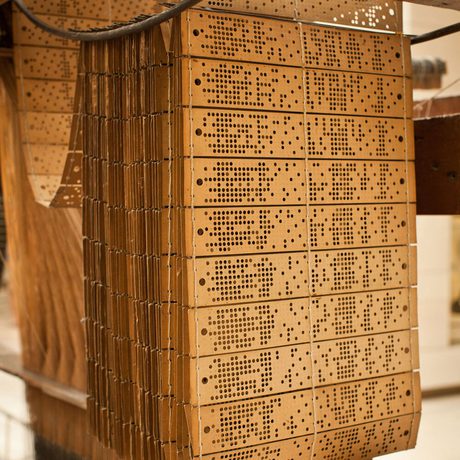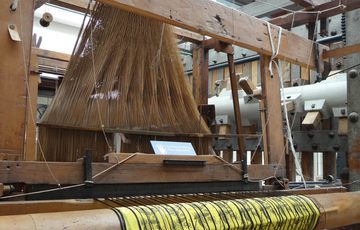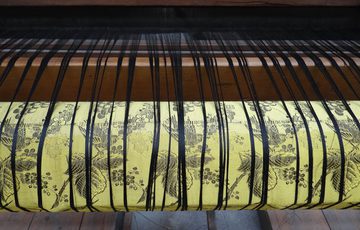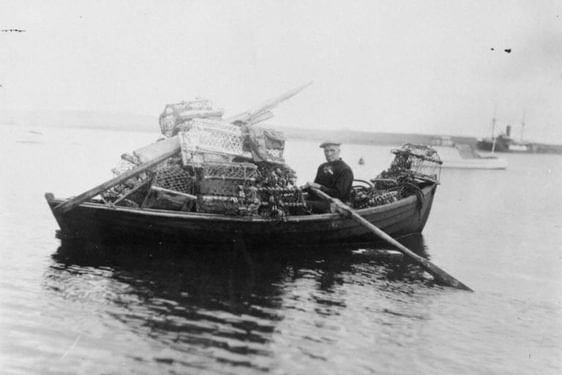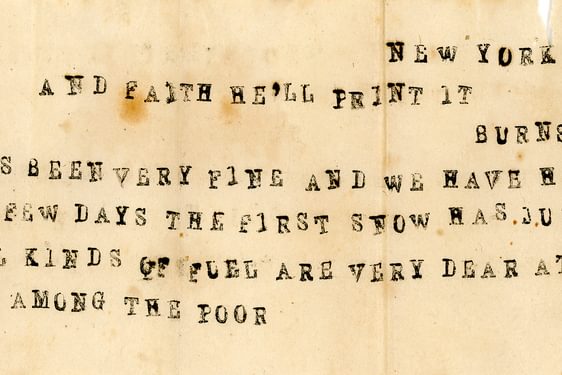
The Jacquard loom: innovation in textiles and computing
News Story
A handloom in our collection was used for weaving silk at Stonehouse in Lanarkshire in the 19th century. It has a Jacquard attachment which allows complex patterns to be woven. The punch cards used in the Jacquard mechanism laid the foundation for modern computer programming.
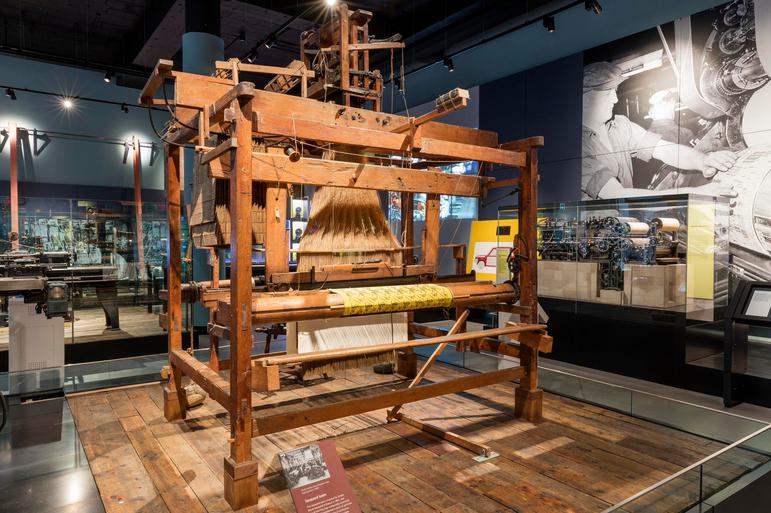
How does a Jacquard loom work?
The Jacquard mechanism was invented by Frenchman Joseph Marie Jacquard. It simplified the way in which complex textiles such as damask were woven, and Jacquard first demonstrated it in 1801.
The mechanism involved the use of thousands of punch cards laced together. Each row of punched holes corresponded to a row of a textile pattern. This modification introduced greater efficiency to the weaving process. It allowed the weaver to produce, unaided, fabrics with patterns of almost unlimited size and complexity. It also influenced the future development of computing technology.
You can see a Jacquard loom in action at Paisley Museum.
Where does the loom come from?
Jacquard looms are recorded in the Scottish textile industry from the 1820s. It is believed that they were operational in Angus, Kincardineshire, and Paisley for shawl production. They were also used in Dunfermline for damask weaving.
The particular loom in our collection was used by two weavers from Stonehouse in Lanarkshire, brothers Robert and James Hamilton. The maker’s stamp ‘J.HOOD, NEWMILNS’, suggests the loom was manufactured by well-known Jacquard loom and lace maker Joseph Hood. He was based in Newmilns, Ayrshire, and he played a big role in the production of looms as well as the development of the Scottish textile industry during the mid to late 19th century.
Image gallery
Weaving was part of ordinary life for many families in Scotland. It was a major cottage industry in Stonehouse for over 200 years. However, the increased automation of looms during the 20th century reduced the need for human input. The industry became outdated and had died out altogether by the 1940s.
While the weaving industry may have suffered, the Jacquard loom has a larger legacy. Charles Babbage, the inventor of the first mechanical computer, was inspired by the Jacquard system to use punch cards to programme his Analytical Engine.
The Jacquard loom (museum reference T.1934.241) is on display in the Making It gallery at the National Museum of Scotland.
